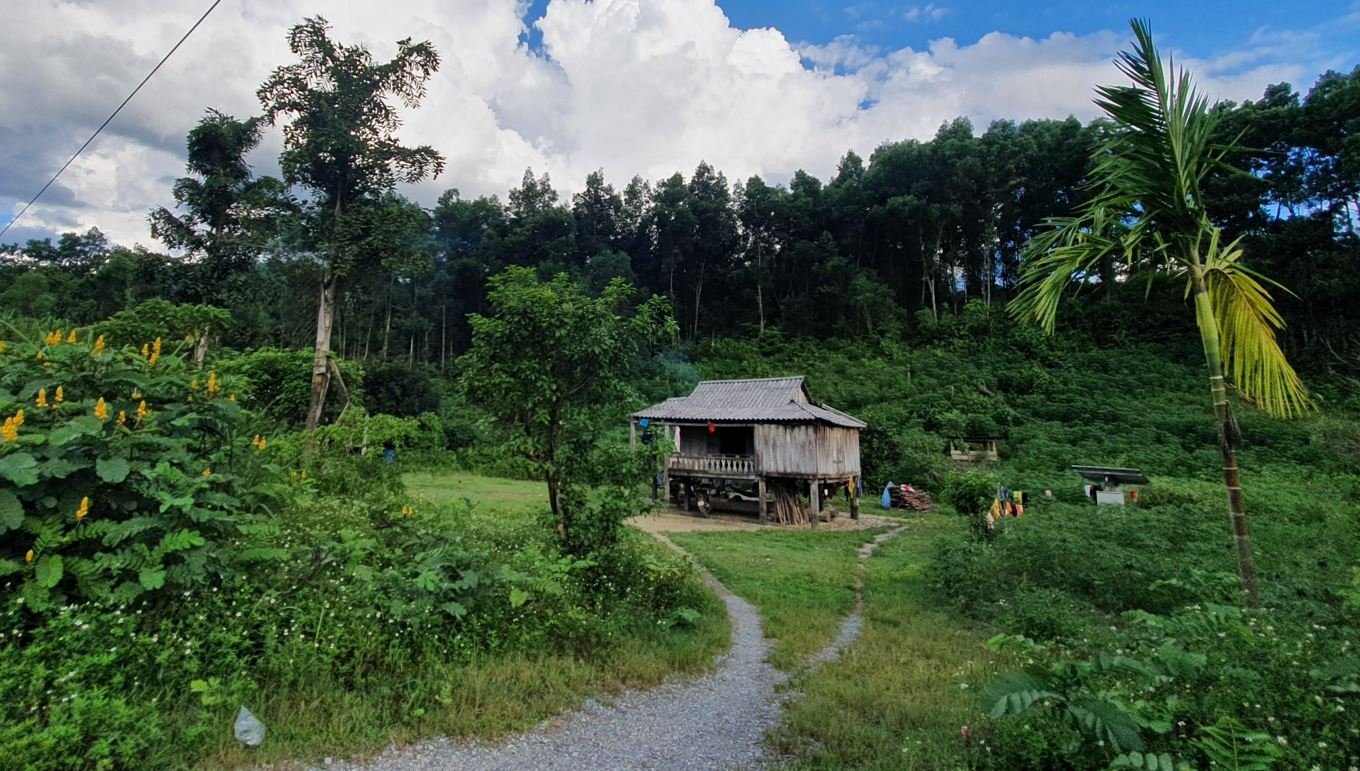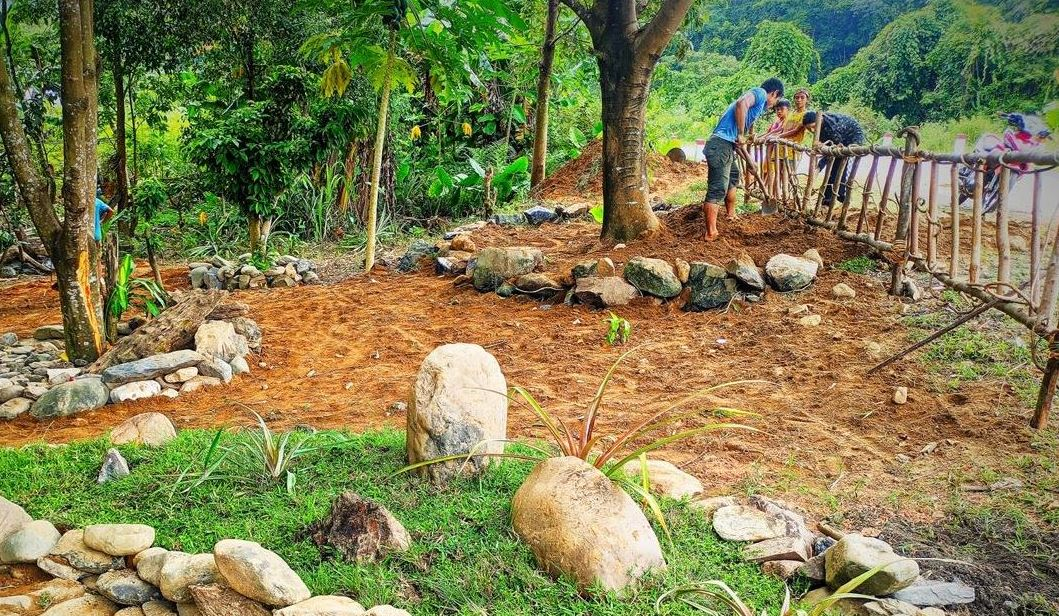
No Electricity, No Phone Waves Homestay in Rum Ho Village, Quang Binh
The United States Agency for International Development (USAID)-funded Biodiversity Conservation Component, VFBC project is currently assisting people in Rum Ho village (Quang Binh) in developing sustainable livelihoods in order to conserve forests and protect forest ecosystem diversity.
Rum Ho village, just starting to travel from the most pristine things, has its first homestay, no electricity, no phone waves. However, this is an opportunity for many neighboring households to learn and create an "ecosystem" of sustainable tourism products.
Rum Ho village is a small village in Kim Thuy commune, Le Thuy district, located approximately 2 hours by car from the center of Dong Hoi, Quang Binh province. With only 109 households in the Bru - Van Kieu ethnic group, the village currently lacks access to the power grid system, and people's lives are still extremely simple, focusing primarily on forest product exploitation and some small forms of animal husbandry.
Aside from the beautiful scenery of the mountains and forests with clear streams as "specialties" around Rum Ho village, there is also The Piano Waterfall of Dong Chau Nature Reserve - Khe Nuoc Trong, which has an attractive beauty for anyone who loves nature.
 The VFBC project, funded by the United States Agency for International Development (USAID), has collaborated with VCTC to assist households in Quang Binh in renovating their homes into lovely homestays in preparation for the first tourists to experience. Vietnam Community Tourism Association Photo (VCTC)
The VFBC project, funded by the United States Agency for International Development (USAID), has collaborated with VCTC to assist households in Quang Binh in renovating their homes into lovely homestays in preparation for the first tourists to experience. Vietnam Community Tourism Association Photo (VCTC)
The Biodiversity Conservation Component, a VFBC project funded by the United States Agency for International Development (USAID), is assisting people in this region in developing sustainable livelihoods, conserving forests, and protecting forest ecosystem diversity. Helvetas, the unit in charge of the component's livelihood activities, has organized training classes to help people become acquainted with the concept of ecotourism, learn cooking skills, serve tourists, and basic photography and videography with phones, as well as use social networks to promote tourism images.
People with new skills can begin operating tourism services in order to stabilize income through the ecotourism model, which builds on existing strengths.
 A stilt house in Rum Ho village, Kim Thuy commune, Le Thuy district, Quang Binh. Photo: Mai Hanh
A stilt house in Rum Ho village, Kim Thuy commune, Le Thuy district, Quang Binh. Photo: Mai Hanh
Some households took the initiative to redecorate their landscapes and campuses in mid-August, after participating in detailed training on how to renovate houses into homestays using available materials at no cost and in close proximity to nature.
To prepare for the first tourists to experience the majestic and clear mountain life at Dong Chau - Khe Nuoc Trong, the first house in Rum Ho small village has been supported to be converted and decorated into a lovely homestay.
 The lovely homestay of Rum Ho village in Kim Thuy commune, Le Thuy district, Quang Binh is ready to welcome the first tourists to experience it. Photo: Mai Hanh
The lovely homestay of Rum Ho village in Kim Thuy commune, Le Thuy district, Quang Binh is ready to welcome the first tourists to experience it. Photo: Mai Hanh
The spacious stilt house and front yard have been transformed extremely vividly using readily available, easily regenerable materials such as bamboo, grass, stone gravel...
Furthermore, the project lecturers enthusiastically instructed students on how to prepare and arrange a green "far away" banquet table. "Xa la" means "leaf" in Vân Kiều. The decorations and food containers on the "far away" banquet table are made from a variety of safe, easily accessible garden leaves, limiting non-recyclable waste. Not only that, but this party provides an opportunity to showcase the beauty of local cuisine and culture.
 Ms. Ho Thi Son is practicing with her teacher to prepare for the "xa la" party. Photo: Mai Hanh
Ms. Ho Thi Son is practicing with her teacher to prepare for the "xa la" party. Photo: Mai Hanh
Ms. Ho Thi Son and Mr. Ho Van Huynh, along with their three children, make their living primarily through small-scale forest exploitation such as picking clouds, bamboo shoots, vegetables, and so on. Ms. Son had a very touching sharing after participating in the homestay renovation course "My family thanked you profusely. He began to assist as well as teach. I'll try to be optimistic so that my income returns and my wife and I no longer need to go to the forest. Hopefully, the project will continue to help people in this area."
 An attractive dish in the "xa la" party of people in Rum Ho village, Kim Thuy commune, Le Thuy district, Quang Binh. Photo: Vietnam Community Tourism Association (VCTC)
An attractive dish in the "xa la" party of people in Rum Ho village, Kim Thuy commune, Le Thuy district, Quang Binh. Photo: Vietnam Community Tourism Association (VCTC)
The first homestay in Rum Ho village, a village without electricity or phone service, was gradually completed with project funding and the cooperation and assistance of the Vietnam Community Tourism Association (VCTC) and surrounding neighbors. This is also an opportunity for many nearby households to learn and form an "ecosystem" of sustainable tourism products.
 The "xa la" party is decorated very attractively and beautifully. Photo: Vietnam Community Tourism Association (VCTC)
The "xa la" party is decorated very attractively and beautifully. Photo: Vietnam Community Tourism Association (VCTC)
Hopefully, with the upcoming series of timely project training and the support of related organizations, Ms. Son and Mr. Huynh's family and relatives in Rum Ho village will have the opportunity to promote the available potential, provide unique experiential tourism services, not only to promote the image of local green tourism to tourists but also to develop a more stable life, contributing to forest protection and biodiversity conservation in Vietnam.
Source: Đinh Nam